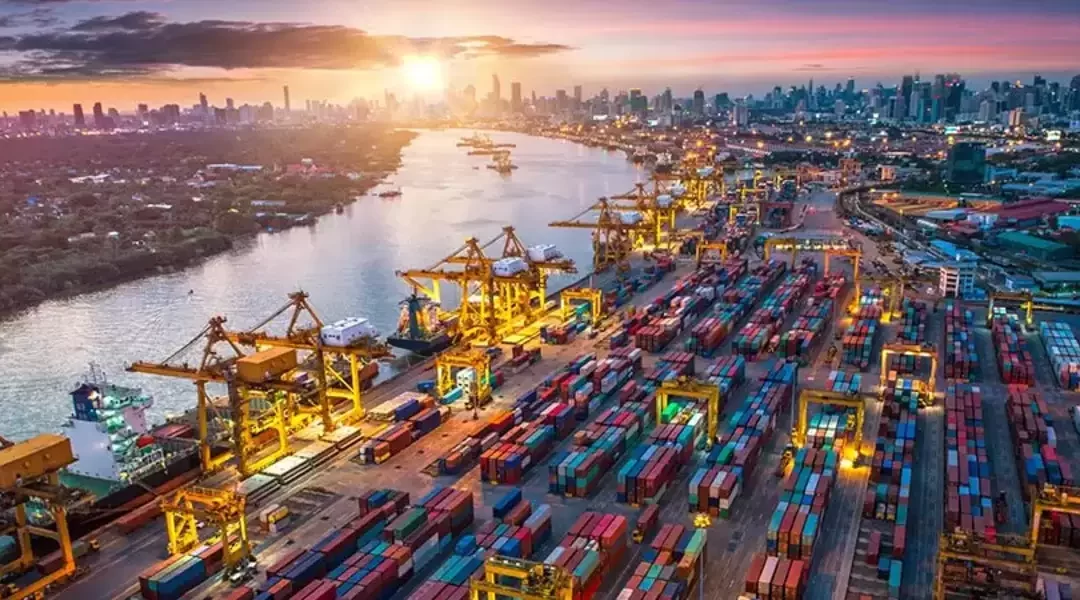Introduction
Global trade is the lifeblood of the modern economy, connecting producers and consumers across continents. The journey of goods from port to destination involves a complex logistics process that ensures products are delivered efficiently and on time. GIIL’s comprehensive curriculum is designed to cover these critical aspects of logistics, preparing students for the dynamic and ever-evolving world of global trade. This article provides an overview of the logistics process, from port operations to final delivery, and highlights how GIIL equips students with the necessary skills to excel in this field.
The Logistics Process: From Port to Destination
1. Port Operations
Port operations are the first critical step in the logistics process. When goods arrive at a port, they must be unloaded, inspected, and processed through customs. Efficient port operations are essential to prevent delays and ensure the smooth flow of goods. Key activities include cargo handling, warehousing, and coordination with shipping lines and customs authorities.
2. Customs Clearance
Customs clearance is a crucial step that involves verifying that the goods comply with local regulations and paying any applicable duties and taxes. This process requires thorough documentation and an understanding of international trade laws. Efficient customs clearance is vital to avoid bottlenecks and ensure timely delivery of goods.
3. Transportation
Once the goods are cleared, they must be transported to their next destination. This can involve multiple modes of transportation, including trucks, trains, ships, and airplanes. Coordinating these different modes of transport, known as intermodal transportation, is essential for optimizing efficiency and cost-effectiveness. Logistics professionals must plan routes, schedule deliveries, and manage transportation providers.
4. Warehousing and Distribution
Warehousing plays a pivotal role in the logistics process. Goods are stored in warehouses until they are needed by the end customer. Effective warehouse management ensures that inventory is stored safely and can be quickly retrieved for distribution. Distribution centers then handle the sorting and packing of goods for final delivery, ensuring that orders are fulfilled accurately and on time.
5. Final Delivery
The final delivery stage involves transporting goods from distribution centers to the end customer. This last mile delivery is critical for customer satisfaction, as it directly impacts the timeliness and condition of the goods received. Logistics professionals must manage delivery schedules, handle any last-minute issues, and ensure that goods reach their destination efficiently.
How GIIL’s Curriculum Covers These Critical Aspects
1. Comprehensive Port Operations Training
GIIL’s curriculum includes detailed training on port operations, covering everything from cargo handling to customs procedures. Students learn about the various types of port facilities, equipment used in cargo handling, and best practices for ensuring efficient port operations.
2. In-Depth Customs Clearance Education
Understanding customs clearance is essential for any logistics professional. GIIL offers courses on international trade regulations, documentation requirements, and strategies for expediting the customs clearance process. Students gain practical knowledge on navigating complex customs procedures and ensuring compliance with trade laws.
3. Transportation and Intermodal Logistics
GIIL’s programs provide extensive education on transportation logistics, including the principles of intermodal transportation. Students learn how to plan and coordinate multi-modal transport, optimize routes, and manage relationships with transportation providers. This training equips them with the skills needed to ensure seamless movement of goods across different transportation modes.
4. Advanced Warehousing and Distribution Management
Effective warehousing and distribution are crucial for successful logistics operations. GIIL’s curriculum covers warehouse design, inventory management, and distribution strategies. Students gain hands-on experience with the latest warehouse management systems and learn how to optimize warehousing operations for maximum efficiency.
5. Expertise in Final Delivery Solutions
GIIL prepares students for the challenges of final delivery by offering courses on last mile logistics, delivery management, and customer service. Students learn how to handle the complexities of final delivery, manage delivery schedules, and ensure that goods reach customers in perfect condition. This training ensures that GIIL graduates are equipped to meet the demands of modern consumers.
Conclusion
The logistics process behind global trade is intricate and multifaceted, requiring a deep understanding of port operations, customs clearance, transportation, warehousing, and final delivery. GIIL’s comprehensive curriculum covers these critical aspects, providing students with the knowledge and skills needed to excel in the logistics industry. By understanding the logistics process from port to destination, GIIL graduates are well-prepared to navigate the complexities of global trade and contribute to the efficient movement of goods around the world.

